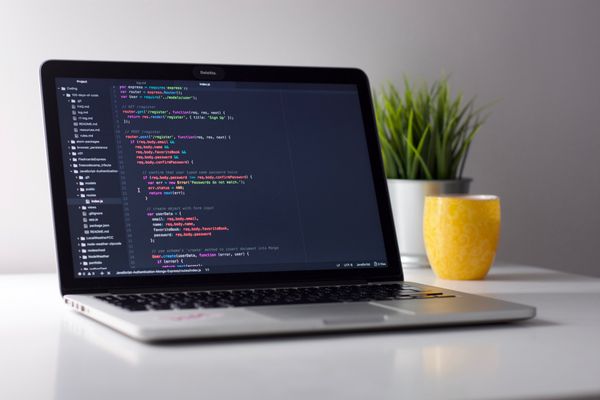Code Quality Matters: Tips for writing clean and maintainable code
As developers, we have all faced the problem of writing efficient code that matches the industry standard. Writing a piece of code and maintaining the quality of the code are two different things in the world of software development, and these arise as major issues for many organizations that are new to the market.
Code quality is critical for the development and maintenance of high-quality software. Clean and maintainable code is easier to understand, debug, and expand, which may save time and money. Furthermore, code quality can directly impact software system efficiency, and security.
What is considered as quality code?
Quality code is defined as the code that follows standardized coding practices, employing clear and descriptive naming conventions, and maintaining a well-organized code structure. These features work together to produce code that is not only functional but also highly readable and understandable.
We will look into these methods for not only achieving cleanliness and scalability in the code you write but also ensuring its long-term maintainability and adaptability in the ever-changing landscape of software development in this comprehensive guide.
How to maintain a better code quality?
There are several aspects of how a good code can be written. The key features of a good code are described below:
Scalability: Foundation of your code
- Scalability is the key to your successful software product. It involves how easy it is to understand, modify, and develop a codebase over time.
- Well-maintained code acts like a solid structure, that survives the test of time.
- It enables the onboarding of new developers, reduces the possibility of updates creating problems, and ensures that the system can meet constantly changing requirements.
Readable code: Sustainability of the code
- Code is for everyone, not just for computers. Readable code is a universal language that exceeds specific computer languages.
- It tells the difference between a well-written work and an unorganized set of statements.
- By utilizing consistent names, insightful comments, and logically arranging the code, you may create a codebase that expresses effectively to any developer who uses it.
Efficiency: Maximizing functionality and performance
- Efficiency is the ability to do the most with the least amount of effort. Writing efficient code is just as important as writing code that works.
- This involves an understanding of algorithms, data structures, and system design.
- A useful codebase can handle larger datasets, finish processes more quickly, and be expanded to manage growing user bases easily.
Reliability: Building trust in software
- Reliability is the foundation of any successful software development. Users want applications to work smoothly, with no disruptions or errors.
- Effective debugging processes, comprehensive testing, and strong error handling may all help to increase a codebase's reliability.
- By investing in reliability, you acquire the trust of your consumers and ensure they always have a great experience when using your software.
Robustness: Preparing for the unexpected
- The robustness of a system refers to its ability to adapt effectively to unexpected events or inputs.
- It involves preparing ahead of time and expecting the unexpected.
- You enhance your codebase against potential flaws by using thorough error handling, reactive programming approaches, and fail-safes. This ensures that your software remains robust and reliable even under difficult situations.
Portability: Code that adapts across platforms
- Portability is a key element at times when your code has to work with multiple operating systems and platforms.
- A portable codebase may run in a number of environments without requiring major changes.
- This increases the number of potential consumers for the software and protects it against changing platforms and operating systems.
Want to know what a good code-quality project looks like? Click the below button to have a look.
What practices should be followed for better code quality?
To ensure the code quality, each software developer follows a set of methods that helps them in finding and fixing errors in the initial versions. Here are a few pointers that you might find useful.
Follow coding standards
In software development, ensuring code quality is essential. Following a coding standard will result in a set of consistent, clear instructions. PEP 8 for Python and the Google Java Style Guide are two examples. Variable naming, indentation, and code structure are examples of such standards which are used to maintain a standard. They promote code that is easier to debug and maintain and can be understandable by anyone.
# Function to calculate the factorial of a number
def factorial(n):
if n < 0:
raise ValueError("Factorial is not defined for negative numbers")
elif n == 0:
return 1
else:
result = 1
for i in range(1, n+1):
result *= i
return result
# Main program
try:
num = int(input("Enter a non-negative integer: "))
result = factorial(num)
print(f"The factorial of {num} is: {result}")
except ValueError as ve:
print(ve)Use clear and descriptive naming conventions
Another important instruction for writing clean code is to use descriptive and clear naming conventions. Because they give meaning to variables, functions, and classes. For example, choose "customer_id" over a useless "x" while writing the code. This method improves code readability, enabling collaboration as well as promoting its maintenance in the future.
# Bad example with unclear naming convention
def fn(x):
lst = [1, 2, 3]
for i in lst:
x += i
return x
result = fn(5)
print(f"The result is: {result}")
# Good example with descriptive naming convention
def calculate_sum(starting_value, numbers_to_add):
total = starting_value
for number in numbers_to_add:
total += number
return total
numbers = [1, 2, 3]
starting_value = 5
result = calculate_sum(starting_value, numbers)
print(f"The result is: {result}")
Organize your code
Organizing code in a sensible manner is instrumental in enhancing its readability. It can be done by grouping similar code together, separating unrelated parts, and using indentation and whitespace wisely. This guarantees that the logical structure of the code is clear and that code parts are distinguishable.
# Organizing code for readability
def calculate_total_cost(item_prices, tax_rate):
subtotal = sum(item_prices)
tax = subtotal * tax_rate
total_cost = subtotal + tax
return total_costUse your comments wisely
While comments are useful for documentation, their excess can hinder code readability. Comments that are concise and to the point are more effective than lengthy explanations. Instead of clarifying functionality, you should focus on explaining code meaning and non-obvious judgments.
# Using comments wisely
def is_prime(n):
if n <= 1:
return False # 1 and negative numbers are not prime
for i in range(2, int(n**0.5) + 1):
if n % i == 0:
return False # n is divisible by i, so it's not prime
return TrueWrite small, focused functions
Functions provide flexibility and reusability, but they must be short and precise. You should avoid broad, overlapping functions that can be difficult to understand. Instead, focus on one task per function, while taking into consideration various tasks.
# Writing small, focused functions
def calculate_subtotal(item_prices):
return sum(item_prices)
def calculate_tax(subtotal, tax_rate):
return subtotal * tax_rate
def calculate_total_cost(item_prices, tax_rate):
subtotal = calculate_subtotal(item_prices)
tax = calculate_tax(subtotal, tax_rate)
total_cost = subtotal + tax
return total_costTesting of the code
Unit testing is a crucial part of maintaining your code quality. These small-scale tests verify that individual code units work properly. A thorough coverage of all possible scenarios helps in the early detection and correction of bugs, preventing operational issues.
Refactor your code
Refactoring is a structural process that improves your code design while maintaining its functionality. It can be done using variable renaming, method extraction, and code deduplication. They all help to improve readability, maintainability, and reusability.
Tools you can use to achieve good code quality:
SAST stands for Static Application Security Testing or Static Analysis. To achieve and test your code quality there are several tools present in the market. They are broadly classified into two types:
· Static tools
· Dynamic tools
Static tools
A static tool analyses the code without executing it, discovering errors based on the structure, grammar, and style of the code. It provides insight into potential faults and coding standards alignment. The commonly used static tools are:
SonarQube
SonarQube is a notable static code analysis tool that evaluates code quality and identifies potential issues early in the development process. It inspects code for weaknesses, security problems, and code errors. SonarQube provides practical feedback, assisting developers in repairing problems and maintaining high code standards. Its comprehensive reporting and user-friendly interface make it a useful tool for maintaining code quality.
Veracode
Veracode is an effective static analysis tool that focuses on code safety. It detects security flaws, legal issues, and potential dangers in source code. The automatic detection tools of Veracode integrate smoothly into the development workflow, providing developers with real-time feedback on security issues. Veracode's comprehensive reporting and teaching assistance enables organizations to create secure software from beginning to end.
Dynamic tools
A dynamic tool examines the code as it runs, implementing real-world conditions. It detects runtime errors, delays in performance, and security risks that static analysis could not identify.
Invicti
Invicti is a dynamic online application security analyzer that was created to detect flaws in web applications. It performs comprehensive checks for cross-site scripting (XSS), SQL injection, and other security concerns. Netsparker's automatic method detects issues quickly and precisely, allowing enterprises to prioritize and solve security issues properly.
AppSpider
AppSpider is a dynamic security testing tool that examines problems in web applications. It simulates real-world risks to find weaknesses, such as injection attacks and unsafe installations. AppSpider generates thorough reports with relevant insights, assisting in process improvement. Its ability to engage with development workflows helps the web application security process.
Rapid7
Rapid7 delivers a number of dynamic security products, including InsightAppSec and Nexpose, that focus on handling vulnerabilities and application security. InsightAppSec provides comprehensive dynamic scanning capabilities for detecting security flaws in web apps. Nexpose, on the other hand, is a risk management solution that evaluates network security posture and provides actionable data for correction.
In the world of software development, code quality is not a choice; it's a requirement. It's the difference between a project that grows and one that flounders. By prioritizing maintainability, readability, efficiency, stability, robustness, and portability, you set up the foundation for a codebase that stands the test of time and gives excellent value to users.
Remember, writing code is not simply a means to an end; it's a craft. It's a representation of the passion, competence, and attention to detail that you bring to your work.
We at Grorapid make sure that all our products and services match the standard code quality and fulfill all the industry criteria of a standard code. Want to know more about our services? Book a consultation call with us.
FAQs
1. Why is code quality important in software development?
Code quality improves readability, maintainability, and reliability, making teamwork and adjustment to evolving requirements easier.
2. How can Grorapid help you maintain your code quality?
We conduct a thorough analysis of the project scope, complexity, and desired features. Our transparent pricing model ensures that you receive a detailed breakdown of costs, including development, testing, and any additional services.
3. How can clear and descriptive naming conventions improve code quality?
Descriptive names for variables, functions, and classes improve code readability, making it easier to understand and maintain for developers.
4. Which development methodologies do you follow?
We primarily adhere to Agile methodologies, with a focus on Scrum and Kanban. This allows us to maintain flexibility, foster collaboration, and respond effectively to changing requirements.
5. When should comments be used, and what guidelines should be followed for effective commenting?
Comments should provide context and explain surprising decisions. They should be brief and focused on defining the code's purpose.
6. What distinguishes Grorapid from other software development firms?
We go beyond just writing code. We're committed to understanding your business goals and creating solutions that align with your vision. Our emphasis on code quality, transparent communication, and a client-centric approach sets us apart in the industry.
Still, confused about how to write efficient and precise code? We’ll cover that for you.




